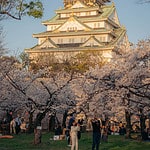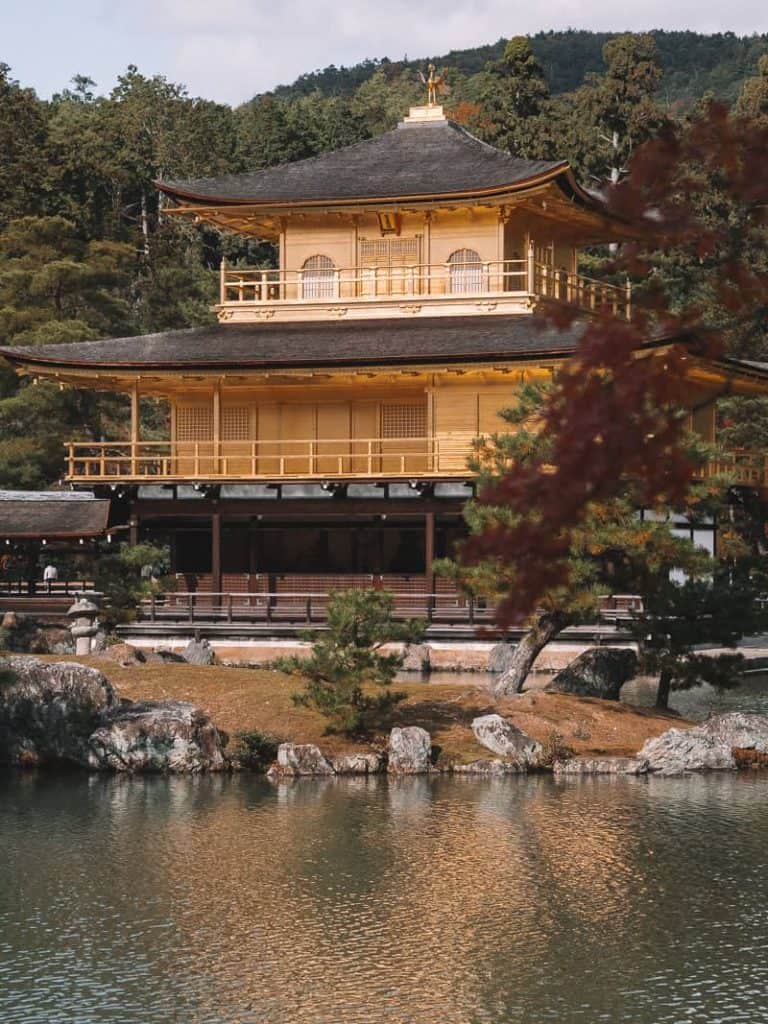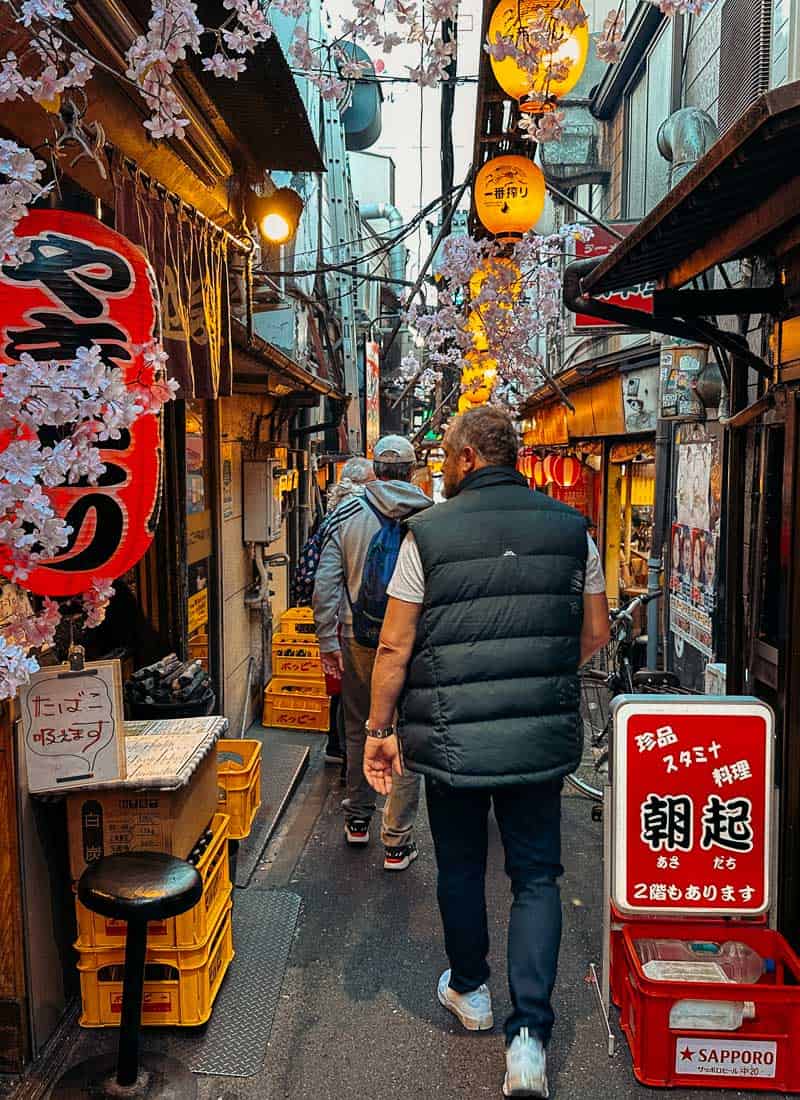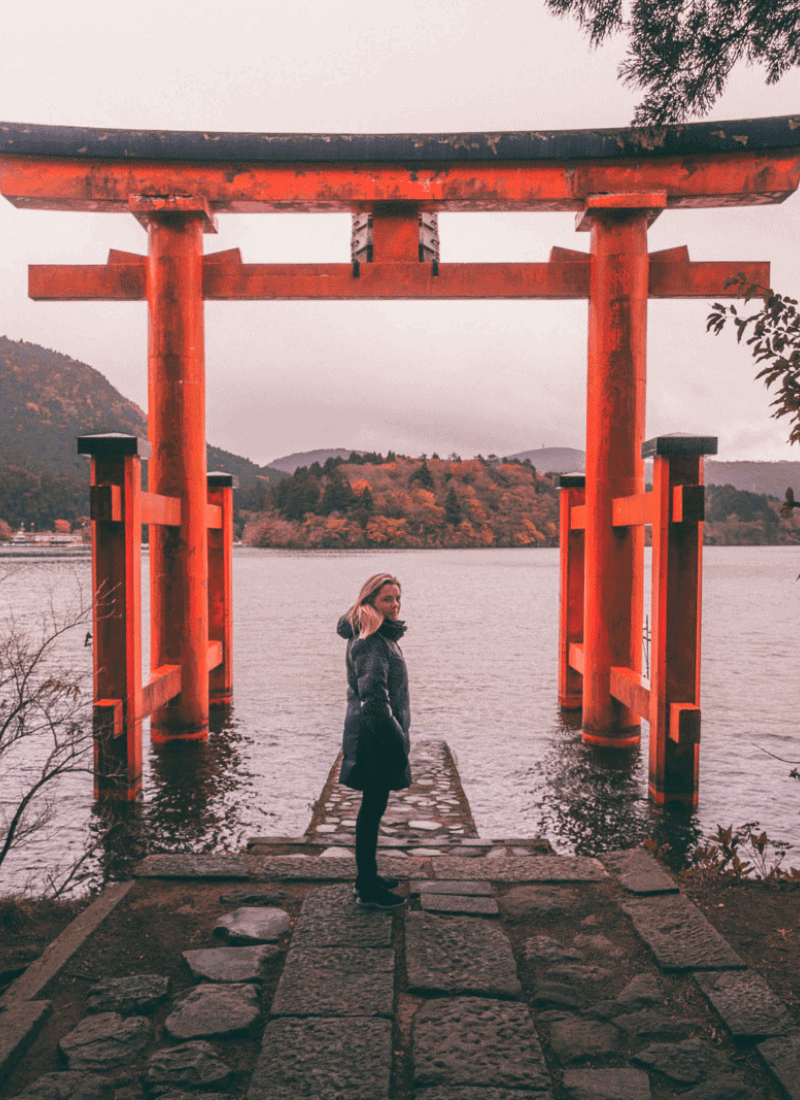Planning a trip to Japan at least once in your lifetime is something that should be on every travelers bucket list. Whether it’s your first time in Japan, or perhaps it’s been a while since you visited, our Japan Travel Guide details everything you need to know before visiting Japan!
Japan is a country known for its rich history, stunning mountains and beaches, great skiing, futuristic mega cities, and has a food scene that will absolutely blow your mind!
After visiting Japan for the first time back in 2018, we absolutely fell in love with the country. We’ve since been back for several more visits and have had the opportunity to see this beautiful country during Spring, Autumn, and Winter!
There are so many beautiful places to visit in Japan, from the well-known tourist destinations like Tokyo or Kyoto to some truly under-rated hidden gems.
Most visitors are pleasantly surprised at how easy it is to travel in Japan compared with other countries. But if it’s your first time visiting, we recommend focusing your itinerary on these 5 destinations.
So, if you’re on the fence about whether to go to Japan, we say absolutely do it sooner rather than later, because Japan is becoming more popular than ever. We’ve got a ton of handy Japan travel tips below to help you plan your own itinerary!
Let’s dive right in…
Visiting Japan at least once is an absolute must-do on anyone’s Bucket List!
Did You Know? We use ads to help pay the bills so we can continue to publish free travel advice. We also have affiliate partnerships, so when you click through and make a purchase or book your stay from one of our blog posts, we may receive a small commission (at no extra cost to you). Thank you for supporting Bucket List Seekers! Read our Disclosure Policy for more details.
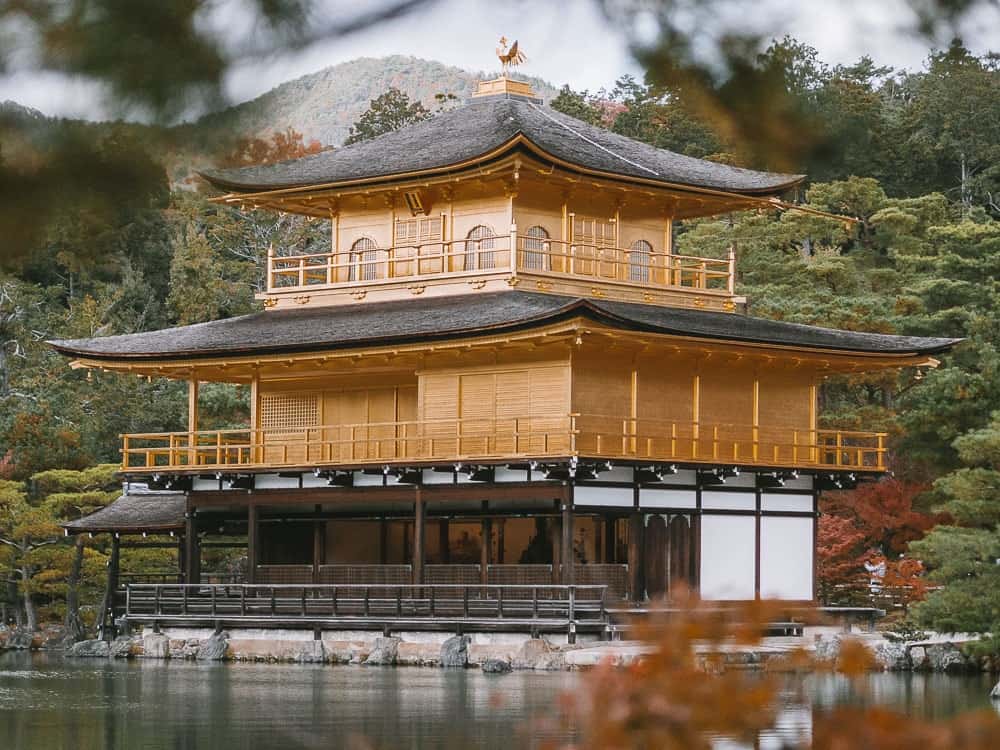
In This Post:
Planning a Trip to Japan
Should you book a tour or travel around Japan independently?
This is a question I often get asked. Traveling in Japan is actually very easy and there is no need to book a tour. The public transport system is efficient and easy to navigate, and there are trains that will get you to all the best destinations you would want to visit in Japan.
In saying that, if you’re the type of person who prefers an itinerary all laid out for you and have someone else take care of all the logistics, then absolutely book a guided tour (or follow our itinerary). Just be aware that you will pay a lot more to visit Japan on a guided tour. And Japan is already an expensive country to visit!
But if you’re happy to save some cash and plan your own trip to Japan, we have a ton of Japan travel blog articles, including itineraries, city guides, first time travel tips, and more, to help you along the way.
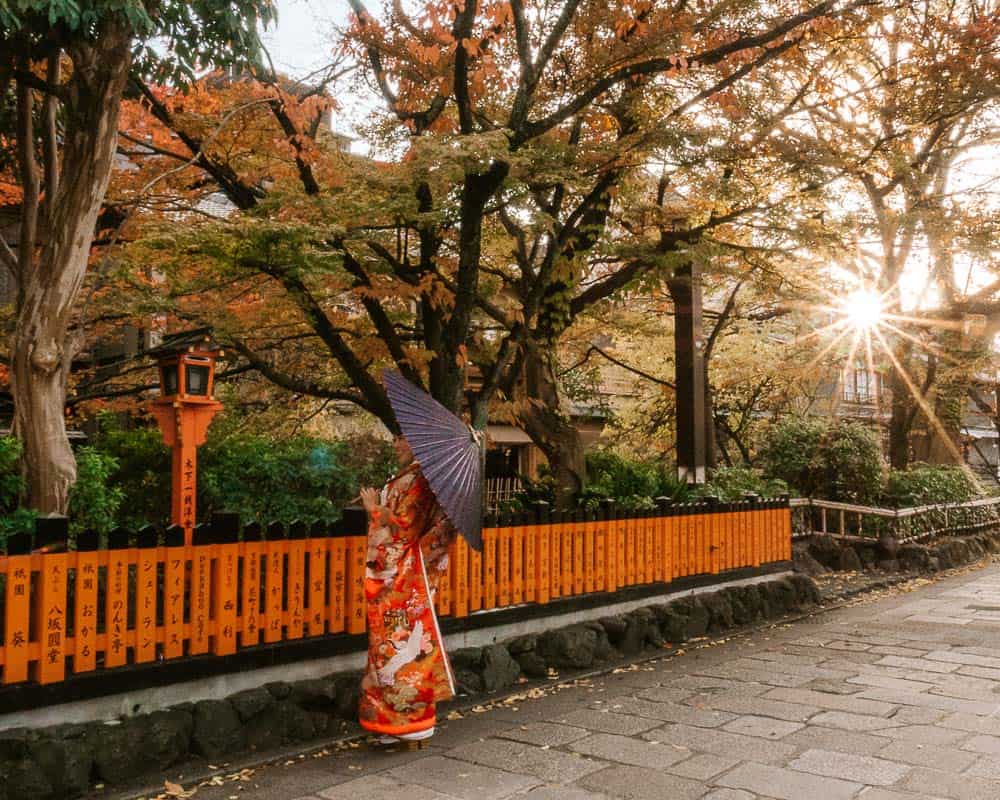
Things to Book Before You Travel to Japan
There are a number of things to prepare before going to Japan. Being organised before you arrive is essential as Japan can be a chaotic place, and with English not being the first language, it can be a stressful experience if you’re not organised before you arrive.
To help you plan a trip to Japan, we’ve made a list of handy resources and things we recommend you book before you arrive:
- Book Flights: We use Skyscanner to search and compare the best flights deals to Japan and get price alerts.
- Book Hotels: Accommodation in Japan can book up quickly, especially during peak season (spring and autumn). We book all our accommodation through Booking.com to take advantage of their Best Price Guarantee.
- Get a Japan Rail Pass: If you plan to travel on the Shinkansen (bullet train) in Japan, then we recommend purchasing a Japan Rail Pass at least 4 weeks before your departure.
- Pick up a contactless public transport card: You’ll need one of these to tap on tap-off on the metro, buses and other public transport systems around Japan. We recommend purchasing a SUICA card before you arrive (pick up in Tokyo).
- Book an airport transfer: Due to the language barrier, it can often be overwhelming dealing with taxis or public transport when you first arrive in Japan, if you don’t feel confident then we recommend booking a private transfer to get you from the airport to your accommodation.
- Book day tour and attraction tickets: We recommend using either Klook or Viator to book day tours and attraction tickets before you go to Japan. This will ensure you don’t miss out on the best tours, and you won’t have to wait in line for the popular tourist attractions in Japan.
- Purchase WiFi or Sim Card: You will use your phone a lot when navigating your way around Japan. Make sure you’re organized by purchasing a Pocket WiFi with unlimited data or a Japan SIM Card that will help you save money on roaming costs.
- Get travel insurance: As with anywhere you visit in the world, having travel insurance is a must. We recommend Safety Wing for comprehensive worldwide insurance.
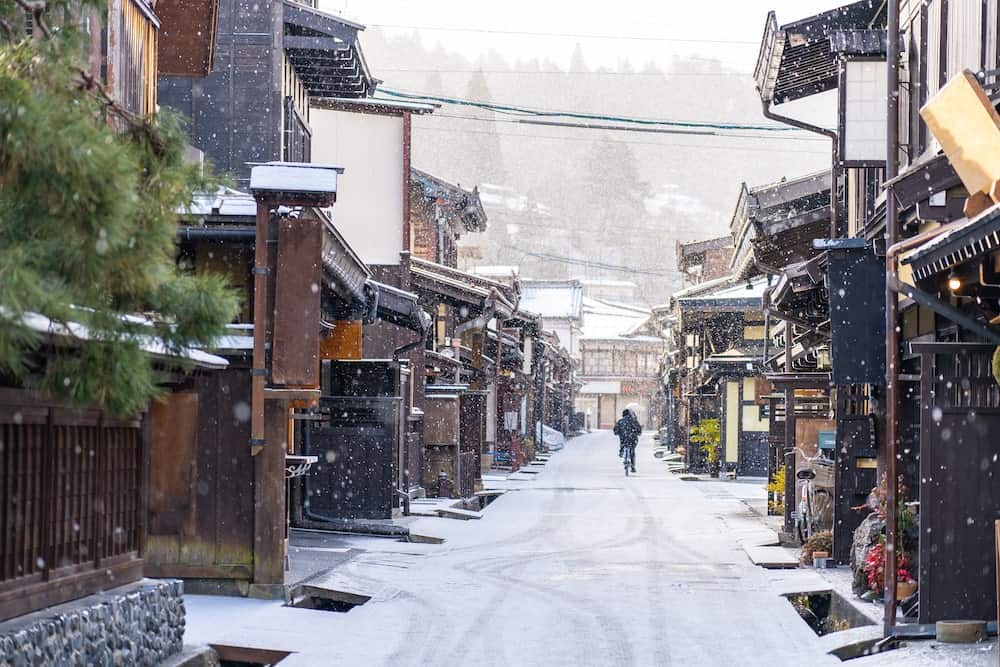
When is the Best Time to Visit Japan?
If you’re wondering when is the best time of year to visit Japan – in truth, there is not one time of the year that really stands out above all the rest. Japan has four distinct seasons, each with its own unique climate, scenery, and cultural events. The best time to go to Japan depends on your interests and preferences.
Spring and autumn are popular for gardens, cultural events and beautiful scenery, summer is great for outdoor activities, and winter is ideal for winter sports and hot springs. Here’s a brief explanation of the four seasons in Japan to help you work out which is the best time of year to visit Japan for you!
Spring (March to May)
Spring is a popular time to visit Japan. The weather is mild, and there are many festivals and events celebrating the season. Some people recommend late March or Early April as the best month to go to Japan, as this is usually when cherry blossoms are in full bloom. However, spring is a very busy time for tourism, so expect crowds and higher prices.
Summer (June to August)
Summer in Japan can be hot and humid, especially in cities like Tokyo. However, there are many outdoor activities and events, such as fireworks displays and traditional festivals like Obon. The mountainous areas of Japan are also popular for hiking and enjoying nature.
In our opinion, Summer is probably not the best time to visit Japan, as the weather and monsoon season can be somewhat unpredictable, but that depends entirely on what you want to do.
Autumn (September to November)
Autumn is another popular season for tourism, with cooler temperatures and stunning fall foliage. There are also many cultural events and festivals during this time, such as the Autumn Leaves Festival in Kyoto. It’s a good time for outdoor activities like hiking and visiting hot springs.
We personally loved Autumn in Japan, due to there being less tourists than in Spring. In our opinion, the best month to visit Japan would be late October or early November.
Read More: 25 Stunning Photos that will Inspire You to Book a Trip to Japan in Autumn
Winter (December to February)
Winter in Japan can be cold and snowy, but if you’re into winter sports like skiing and snowboarding, then you might think that is the best time to travel to Japan. There are many winter festivals, such as the Sapporo Snow Festival, where you can see beautiful ice sculptures. The hot springs (onsen) are also a popular winter activity.

How Many Days in Japan?
One question I often get asked when someone is thinking about visiting Japan is, “how many days in Japan is long enough to see everything?”
This is somewhat of a loaded question because Japan is a huge country. There are so many places to visit in Japan, from the major tourist hotspots of Tokyo, Kyoto, and Hiroshima, to the slightly more off-the-beaten path destinations like Hakone, Kanazawa or Okinawa.
How many days you choose to spend in Japan depends entirely on how much you want to see, and how fast you want to travel around.
Most visitors generally tend to spend between 7 to 14 days in Japan. We have itineraries that cover both 7 days and 14 days in Japan.
The amount of time that most visitors choose to visit Japan generally coincides with the days offered on a Japan Rail Pass to get the maximum value out of the pass. You can purchase a Japan Rail Pass with either a 7-day, 14-day, or 21-day option.
7 Days in Japan
Spending 7 days in Japan is the minimum time we would recommend. This is enough time to get a taster of what travel in Japan is like, but not enough to venture further than the regular tourist triangle.
If you’re planning a trip to Japan, and you only have 7 days to fit in as much as possible, then we recommend an itinerary that looks something like this:
- Tokyo: 3 days
- Kyoto: 2 days
- Hiroshima: 1 day
- Osaka: 1 day
This itinerary will ensure you experience some incredible sights and the best cities to visit in Japan, following the well-trodden tourist path. However, it will not really allow you to get off the beaten path at all.
Be aware that this itinerary will only work for people who are okay with being on the move constantly, as it’s a lot to squeeze into 7 days and you won’t have a great deal of downtime.
Read More: Japan 7 Day Itinerary: The Best Route From Tokyo to Kyoto
14 Days in Japan
The best Japan travel advice we could give anyone is, if you have the time, then we would highly recommend stretching your time in Japan to at least 14 days.
If it’s your first time in Japan then planning to spend 14 days is the ideal amount of time, in our opinion. 14 days will allow you to tick off these must-see places in Japan, plus extend your itinerary a little further and experience some smaller towns and off-the-beaten-path gems.
A 14-day itinerary would also be a little less hectic than 7 days, and you can factor in some downtime in a few destinations. We would recommend staying mostly on the island of Honshu (the main island of Japan) and covering the following destinations:
- Tokyo: 4 days
- Nikko: 1 day
- Kanazawa/Takayama: 1-2 days
- Kyoto: 3-4 days
- Hiroshima & Miyajima: 1-2 days
- Okayama/Himeji: 1 day
- Osaka: 1-2 days
- Hakone: 1-2 days
21 Days in Japan
However, if you’re lucky enough to have 21 days to spend in Japan, then you can really get to know this beautiful country. This is enough time to allow you to venture further afield and tick off more of these Japan bucket list items. We would recommend heading to Okinawa in the south, or Hokkaido in the north (or both!).
Start by following the 14-day itinerary above, so you get to see all the major tourist attractions in Japan, then during your third week, you could either:
- Fly from Tokyo to Okinawa to experience the crystal-clear waters, white sands, incredible beach resorts, and hiking opportunities; or
- Catch the Shinkansen further north of Tokyo to Sendai (2 days), Hokodate (2 days), and Sapporo (2-3 days) to explore the mountains and forests, traditional Japanese way of living, and incredible food scene.
Alternatively, you could extend the above 14-day itinerary and add some stops at some of these unique places to visit in Japan.
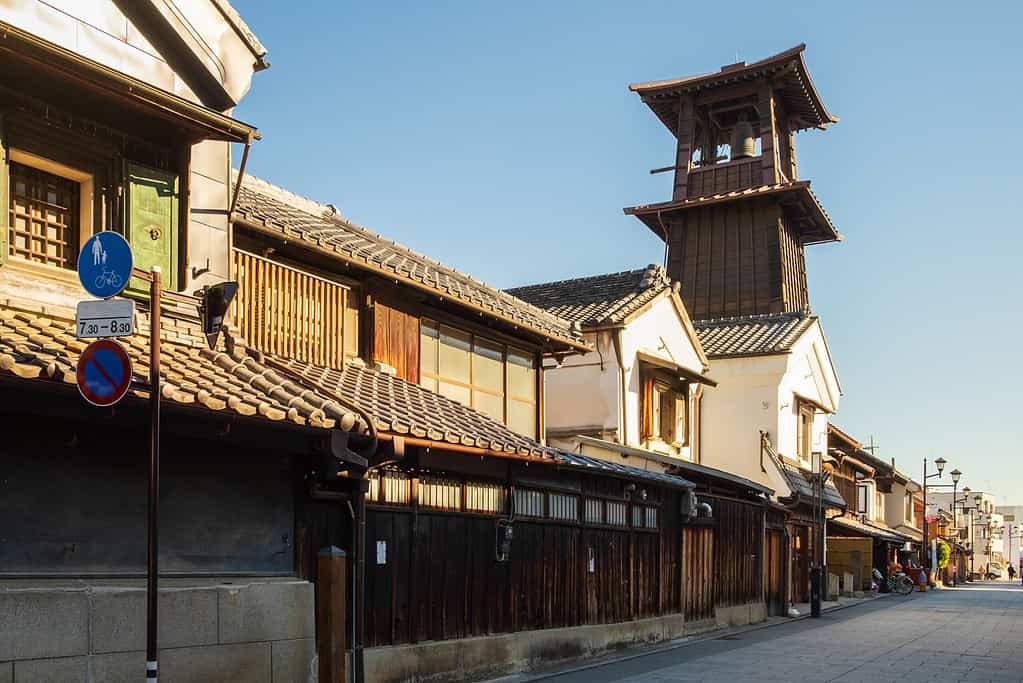
Trip to Japan Cost
A lot of people tend to think that Japan is really expensive. And yes, it can be. But there are also many affordable options available for budget travellers too.
There are many different styles of accommodation in Japan, making it a great country for both budget travellers and those seeking a little more comfort.
On the budget side, you’ll find loads of hostels, doom rooms, capsule hotels, budget Airbnbs, and local family-run ryokans/guesthouses with traditional style tatami-floor bedding.
If you have a little more to spend, 4 or 5-star hotels with buffet breakfast, and up-market ryokans with western-style bedding are a plus. Many hotels in the larger densely populated cities such as Tokyo, Osaka, or Kyoto have much smaller rooms compared with other countries, even the 5-star hotels. This is mainly due to the space factor.
Japan Rail offers both standard and first-class carriages. Standard class on most trains is exceptionally clean and comfortable and offers great value for budget travellers.
Here is a rough estimate of the cost of a few common expenses when traveling in Japan:
- A local beer = $6
- A bowl of ramen or soba noodles = $9
- A Kaiseki meal experience = $100+
- A night in a capsule hotel in Tokyo = $50-$70
- A night in a traditional Ryokan with tatami bedding = $20-$40
- A night in a 3-4 star boutique hotel or Ryokan = $150-300
- A night in a 5-star luxury hotel in Tokyo (e.g. Tokyo Hilton) = $450+
- Entrance fees to temples, museums, or gardens = many are free, but some of the more popular ones charge between $5 to $18.
Ideally, we would recommend the below budget as a guide per day for a couple (not including flights), depending on your style of travel and taste in accommodation. This budget breakdown includes accommodation, transport between and around the major destinations, activities, and food.
Just be aware that accommodation prices tend to be higher in Tokyo and Kyoto compared with other destinations in Japan, so the following costs are an “average”.
As an example, we paid around $450 a night for a 5 star hotel in Tokyo, but then only paid $185 for a night in a 5 star hotel in Kanazawa. This is one reason why we recommend opting for a combination of the big cities plus some lesser-frequented tourist destinations during your itinerary to keep costs down.
Budget ($100 – $180 per day)
This average daily budget would be enough for two people for accommodation in hostels, capsule hotels, Airbnbs, and local family-run ryokans/guesthouses with traditional style tatami-floor bedding. This daily cost would also cover casual meals in local cafes, such as ramen or sushi, or street food, plus entrance fees to most tourist attractions. This budget does not necessarily factor in additional costs for any day tours, which can be quite costly.
Mid-Range ($300 – $500 per day)
This average daily budget factors in the cost for two people to stay in 3 or 4 star hotels, Airbnbs, or ryokans with western-style bedding. It also includes transport in standard train carriages, and a combination of casual meals, plus a few splurge meals at nice restaurants, entrance fees to tourist attractions and the occasional guided day tour.
Luxury ($600+ per day)
If you’re willing to budget a higher amount, then the sky’s the limit really. But I would recommend $600 day as the minimum is what you can expect to pay for 4-5 star hotels, transport in first class train carriages, entrance to tourist attractions, plus hotel buffet breakfasts, and meals at upmarket restaurants.
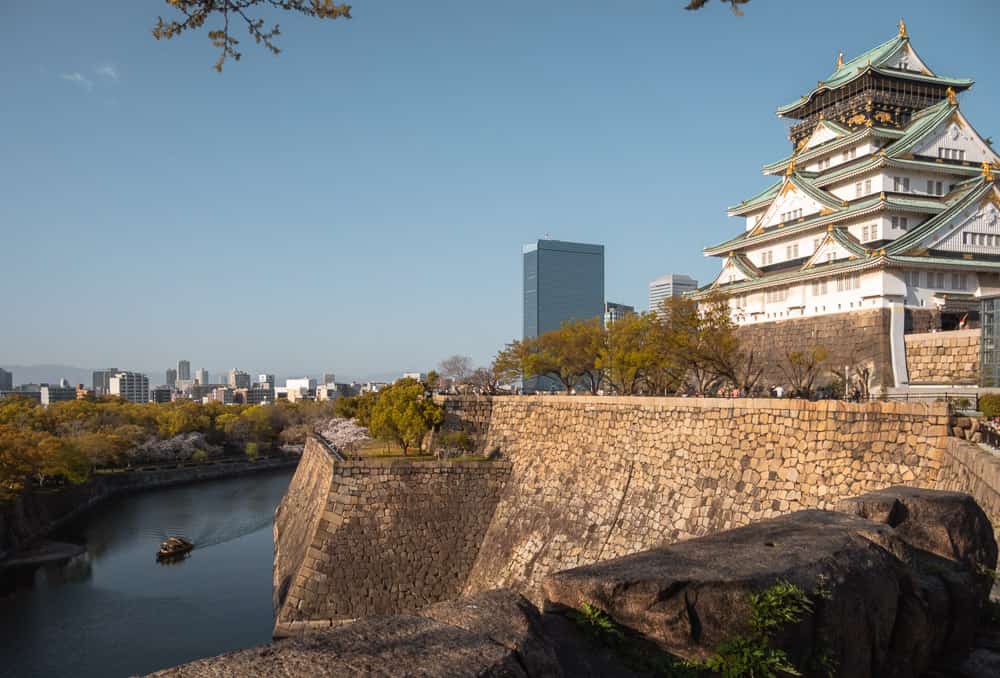
Getting Around Japan
By Train
If it’s your first time in Japan, travelling by train is the most common and easiest way to navigate around Japan. Japan’s railway networks are extensive, with trains running frequently and on time.
There are local trains that stop at every station, limited express trains, and shinkansen (bullet trains), which are high-speed trains that can travel up to 320 km/h (200 mph).
Most visitors to Japan purchase a Japan Rail Pass before arriving. This allows holders unlimited travel on the Japan Rail network which is the most widely used train network in Japan. There are other train networks that you can’t use the Japan Rail Pass on, but most tourist destinations are generally well connected by Japan Rail.
A Japan Rail Pass can be purchased for a set period – either 7, 14, or 21 days. The Japan Rail Pass can only be purchased before arriving in the country. We recommend purchasing through Klook at least 4 weeks before your trip. After arriving in Japan, you’ll have to exchange your pre-paid coupon for a Japan Rail Pass and then you can make seat reservations for your trip.
By Car
We love a good road trip. It’s one of our favourite ways to see a country because it gives you a little more independence to travel at your own pace without having to rely on public transport.
However, driving in Japan is not the most common way to get around for first time visitors because it can be quite a challenge. Japan has some unique traffic rules that may be different from what you’re used to in your home country.
In Japan they drive on the left-hand side of the road. Most road signs in Japan are written in Japanese, so it can be difficult to navigate if you don’t know the language. However, many major roads and highways also have English signage, especially in tourist areas.
You can rent a car in Japan through Rentalcars.com. Be aware that you will need to have an International Driving Permit to rent a car in Japan.
By Plane
Japan Airlines (JAL), All Nippon Airways (ANA), and low-cost carriers such as Peach Aviation and Jetstar are the main carriers operating in Japan.
Domestic flights are often a convenient option for travelers who want to save time or avoid long journeys by train or car. Though, travelling around Japan by plane is more common for locals than tourists because air travel can be expensive, and Japan Rail offer a cost-effective alternative for tourists to travel by train.
We would recommend travelers take a domestic flight if you’re wanting to visit further away places such as Hokkaido or Okinawa. You can check schedules, and book tickets via Skyscanner.
Join a Tour
Another alternative to travelling around Japan is to join a group tour. This is a great option if you’re not confident to navigate your own way around a foreign country where English isn’t widely spoken. Or perhaps you simply want an itinerary all planned out for you, or you just love travelling with and meeting other people.
Tourradar lists several options for tours around Japan, from larger group trips to smaller boutique-style or adventure tours.
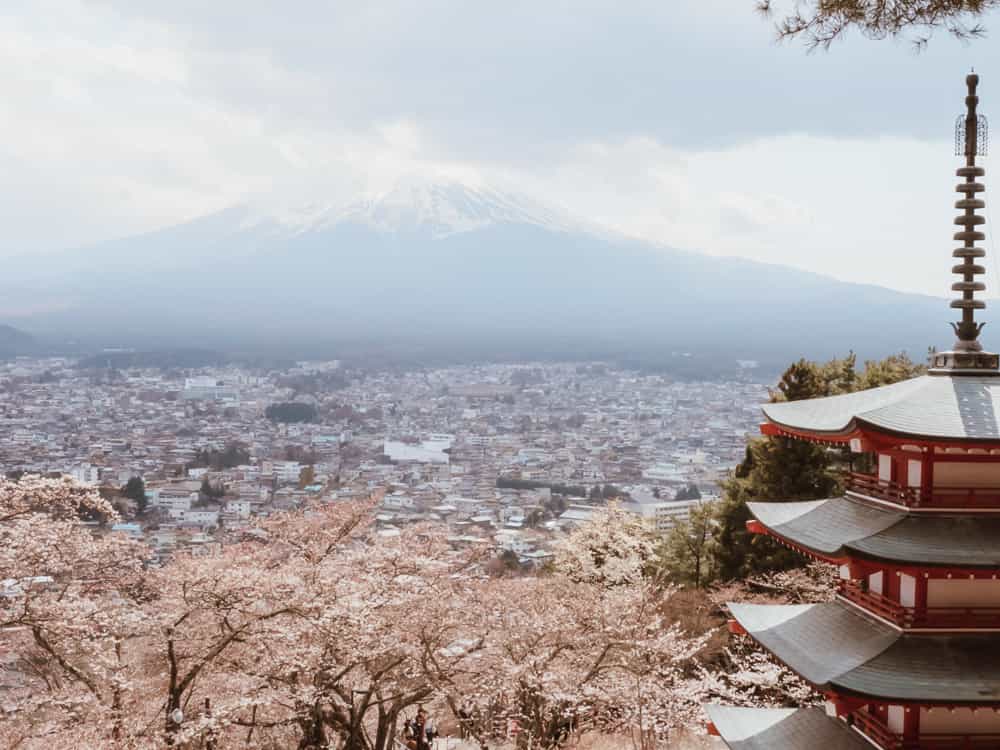
Best Places to Visit in Japan
There are so many places to see and things to do in Japan. You could easily spend months exploring the entire country. If you don’t believe us, then check out all the incredible things to do on our Japan Bucket List!
However, most tourists visiting Japan for the first time only have a week or two to spend there and tend to stick to the main tourist cities of Tokyo, Kyoto, Hiroshima and Osaka. But there are also some amazing hidden gems to be discovered when planning a trip to Japan.
Below is a brief rundown of the top places to visit in Japan for first timers (including a few hidden gems, that are less frequented by tourists), or click here for more in depth information about visiting each of these destinations.
Unfortunately, we couldn’t list every destination in this Japan travel guide, so the list below is by no means an extensive list of places to see in Japan. It simply highlights the most popular must-do spots that most visitors tend to gravitate to first.
If you’re looking for some other great places to visit in Japan, check out these articles for some inspiration:
#1 | Kyoto
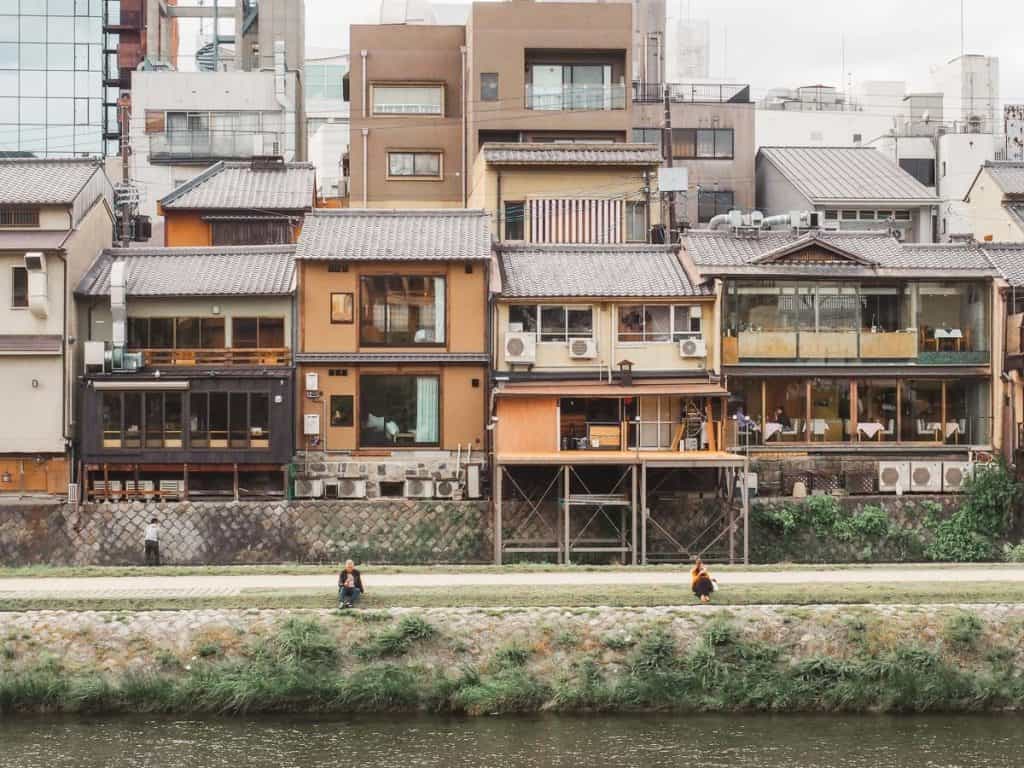
Kyoto would have to top our list of the best places to see in Japan. It’s a city packed with historical temples and shrines, incredible Japanese gardens, and quaint cobbled streets with traditional shop houses.
Japanese culture simply oozes out of every corner of this beautiful city and it’s a great place to really immerse yourself in old-world Japan traditions.
Kyoto is one of those must visit places in Japan that you simply cannot leave off your itinerary. It’s our favourite of all the cities we’ve visited in Japan and we could honestly go back there again and again.
The most popular Japan tourist attractions are usually found in Kyoto, making it quite a busy tourist destination. In fact, it’s one of the most visited places in Japan!
Many tours only spend a day in Tokyo, but we recommend at least 2 days in Kyoto. Though you could easily 3 or 4 days in Kyoto and still have a full sightseeing itinerary as there are so many things to do – check out this list of 25 top things to do in Kyoto.
Read More About Kyoto:
#2 | Tokyo

Tokyo is a modern bustling metropolis that’s constantly buzzing with energy and excitement, with its neon-lit streets, towering skyscrapers, futuristic museums, and endless array of delicious food options.
Being the capital and largest city in Japan, most visitors would arrive at one of the two international airports located in Tokyo (Haneda or Narita).
Tokyo is a great place to kick off your Japan sightseeing itinerary, as there are many popular tourist attractions to tick off your Japan bucket list.
So, how many days should you spend in Tokyo? We recommend 2 days at a minimum, but ideally 3-4 days to see the best of what Tokyo has to offer.
Read More About Tokyo:
#3 | Hakone
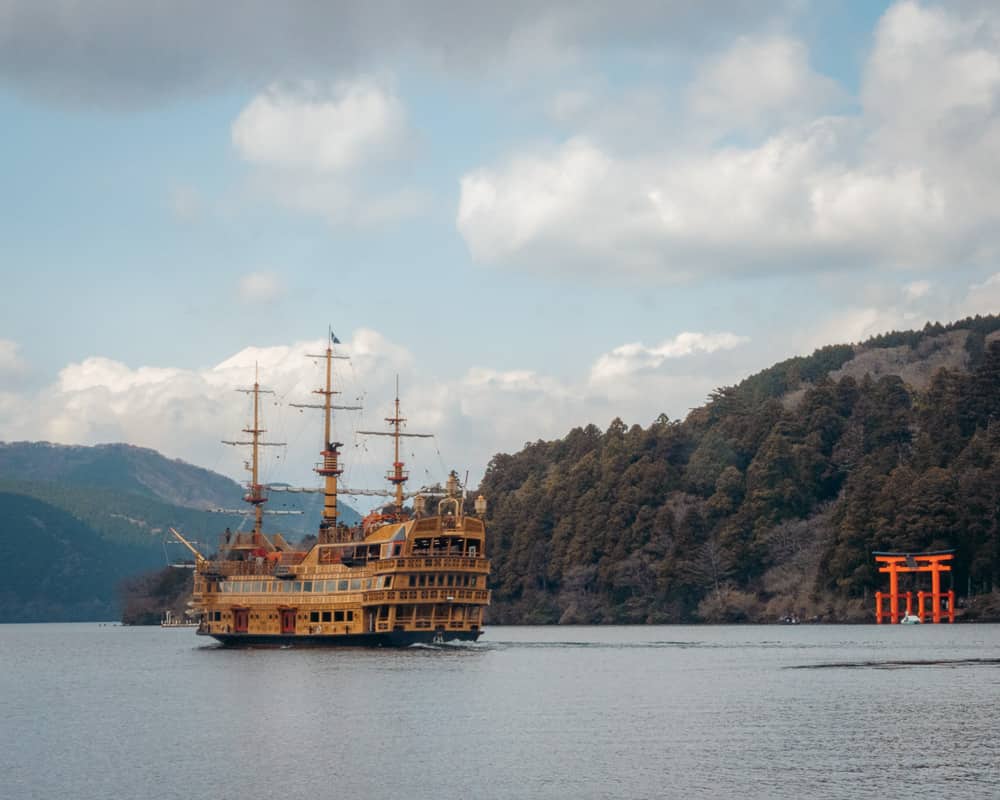
Spending a few days in Hakone is one of our top recommendations when visiting Japan. The area consists of a series of quaint mountain villages inter-connected by train or bus.
Hakone is famous for its hot springs, Japanese gardens, open-air museums, volcanic activity, and incredible views of Mount Fuji. Catching a glimpse of Mount Fuji is top of most visitors list of the best things to do in Japan, but it’s not an easy one to tick off, as Mount Fuji is hidden behind cloud 70% of the time. But if you’re going to see it from anywhere, then Mount Hakone usually offers a great opportunity.
Hakone is one of the best under-the-radar places to visit in Japan for first-timers, as it’s very close to Tokyo and easy to reach by train. It’s possible to visit Hakone on a day trip from Tokyo, but we recommend spending at least 1-2 nights there to really enjoy the relaxing hot spring vibe.
Read More About Hakone:
#4 | Hiroshima

Hiroshima is a city in Japan that has a lot of historical significance, due to the devastating impact of the first atomic bomb dropped during World War II. The destruction caused by the bomb is still evident today with the Hiroshima Peace Memorial Park being one of the most popular Japan tourist attractions.
Before visiting Hiroshima, I honestly wasn’t all that fussed about going there, as I thought it was a little out of the way, and I didn’t think there was much to do there. However, I would actually list Hiroshima as one of the best places to go in Japan for first-time visitors.
Learning about the devastation caused by the atomic bomb was extremely moving and visiting the Hiroshima Peace Memorial Museum honestly left me lost for words.
Hiroshima is located on the southwestern part of Honshu Island and on the map, appears quite a distance out of the way. However, it’s only 2 hours from Osaka or Kyoto via Shinkansen (bullet train), and well worth the journey to visit for a day trip or overnight stay.
#5 | Osaka
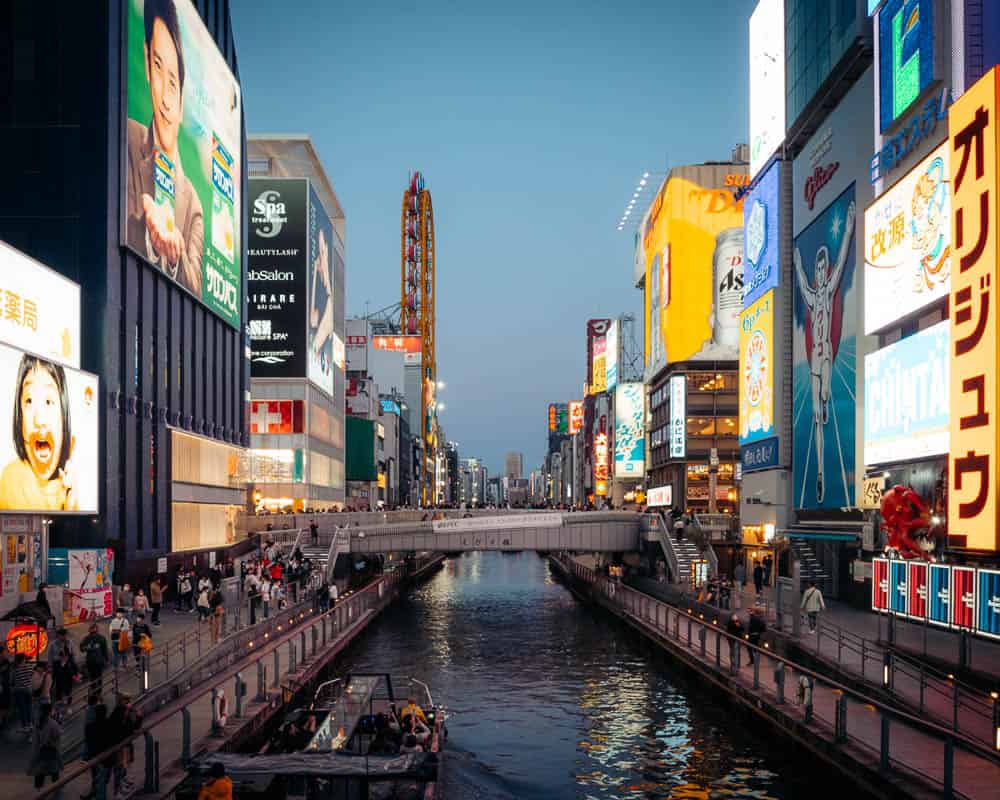
Osaka is the third-largest city in Japan, after Tokyo and Yokohama, and is known for its incredible food scene, lively nightlife, and friendly locals. It’s well worth a visit on your Japan itinerary.
The Osaka Castle is one of the most popular things to see in Japan and a stunning example of Edo-era architecture.
Although Osaka is usually not as popular with tourists as the likes of Kyoto and Tokyo, we were pleasantly surprised at how much we enjoyed spending a day sightseeing in Osaka and would highly recommend including a visit on your Japan itinerary.
#6 | Kanazawa
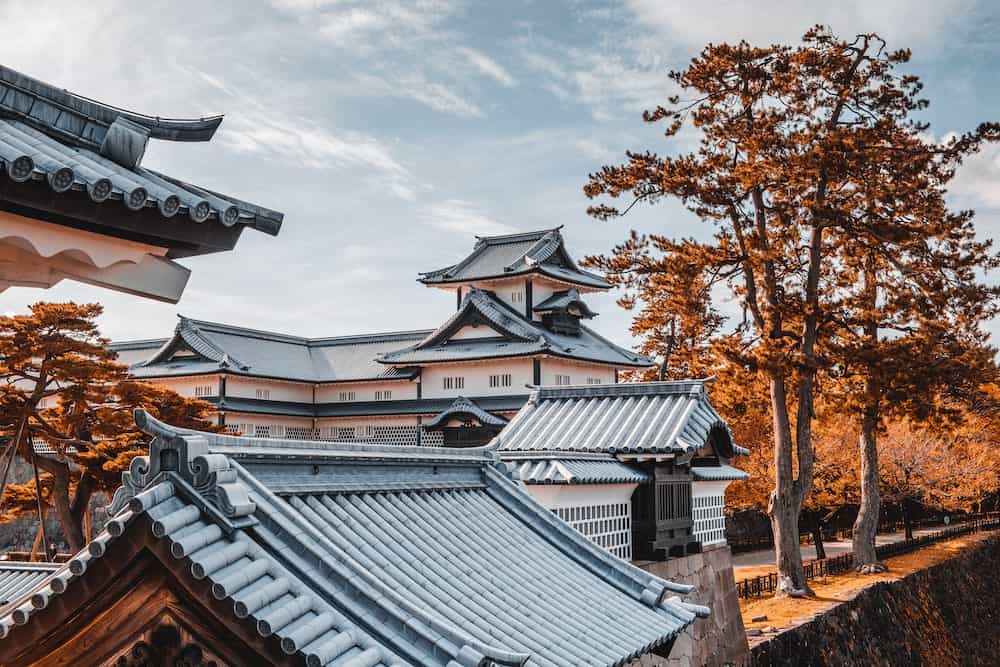
Kanazawa is a truly underrated place to visit in Japan. Located on the west coast of Japan’s Honshu Island, Kanazawa is only a 2.5-hour Shinkansen ride from Tokyo, making it a perfect place to stop on a 14-day Japan itinerary.
The city is best known for its beautifully preserved traditional neighbourhoods, and famous well-manicured gardens.
One of the most well-known gardens in Japan, the Kenroku-en Garden, is reason alone to plan a visit to Kanazawa, but if you’re looking for more, there’s also the Kanazawa Castle, a stunning example of Edo period architecture, or the Higashi Chaya district, a traditional area with picturesque streets lined with old teahouses that are now home to souvenir shops and cafes.
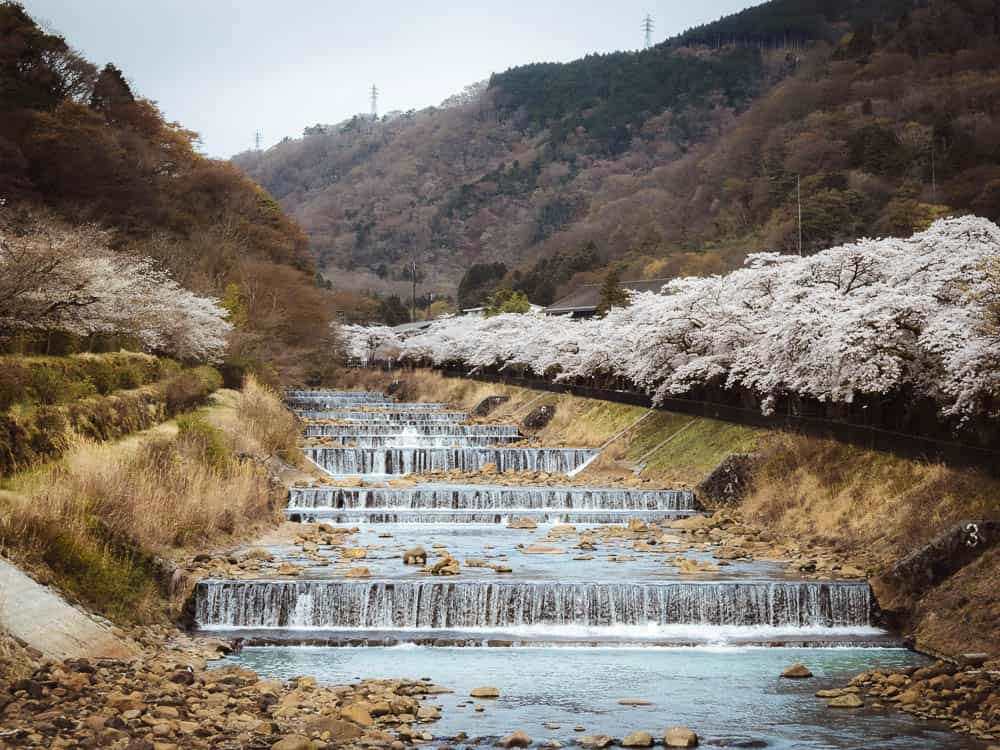
More Japan Travel Tips
Visiting a country that speaks a foreign language can be overwhelming. But despite the language barrier, we personally found Japan to be one of the easiest countries to navigate. The Japanese people are very kind by nature, and most will go out of their way to help you, even if they don’t speak English very well.
Below we’ve outlined some basic information on things you should know before traveling to Japan for the first time.
Language: The main language spoken in Japan is Japanese. English is not commonly spoken; however, many younger generations generally have enough language skills to have a brief conversation. English is more widely spoken in Tokyo than in other cities.
Visas: Visitors with a US or AU passport do not require a visa to visit Japan. Check if you need a Visa using iVisa.com.
Currency: The currency used in Japan is the Japanese Yen (JPY). Click here to get the current exchange rate in USD or click here for AUD.
Credit Cards & Cash: Most hotels, larger restaurants, and retailers will accept credit cards as payment. Japan is still largely a cash economy (although this is slowly changing), and a lot of smaller food outlets or markets will only accept cash, so it’s best to have some cash on you.
Tipping: Tipping is not expected in Japan and is not commonly practiced.
Power plugs: The plugs used in Japan are Type A and Type B. The voltage is 100 volts, and the frequency is 50/60 Hz. We recommend buying a universal adapter with surge protection.
Safety: Is it safe to travel to Japan? Absolutely. Japan is one of the safest countries we’ve ever visited. Crimes against tourists are rare. It’s also one of the countries where we’ve felt the most comfortable as a minority.
Feeling inspired? Here are 10 amazing destinations you must add to your Travel Bucket List!
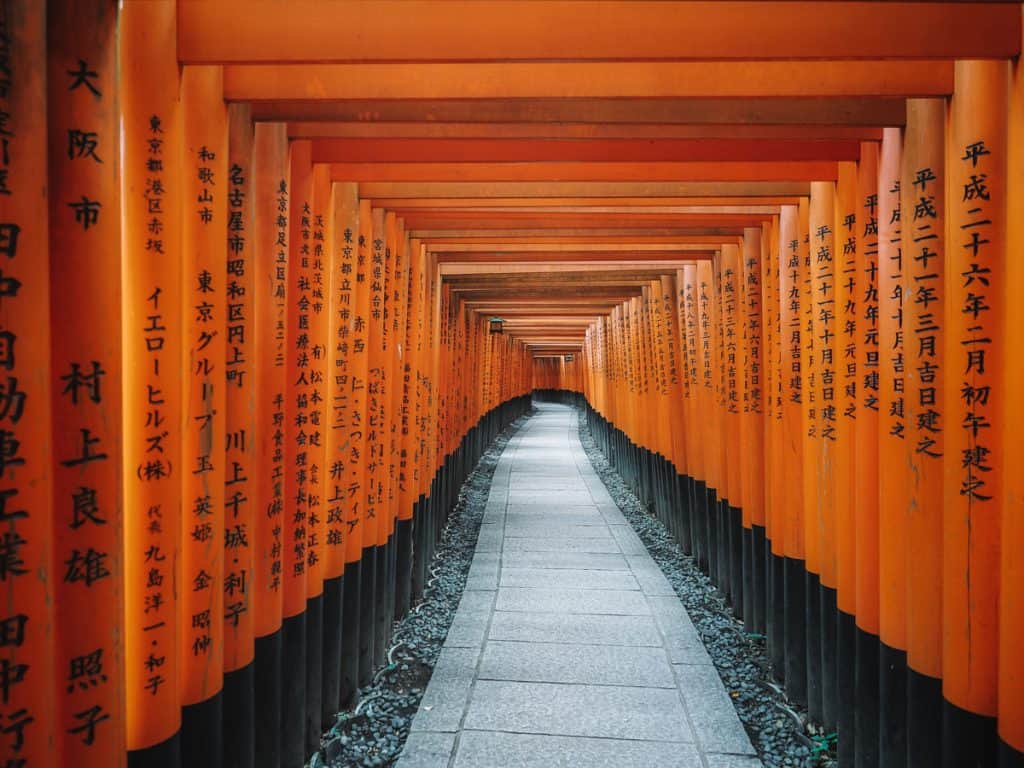
Ready to Book Your Trip to Japan?
Japan is a truly unique and fascinating country with a rich history, culture, and way of life. Whether you are visiting Japan for its vibrant pop culture, ancient traditions, or stunning landscapes and beautiful people, Japan is a place that is sure to leave a lasting impression on anyone who experiences it.
We hope this Japan travel guide has helped you with all the information you need to dive in and start planning your first trip to Japan!
If you’re looking for more handy Japan travel tips, itineraries, and city guides, we have a ton of articles in our Japan travel blog library. We also recommend checking out the following useful websites that offer in depth guides for planning a trip to Japan:
- Travel Japan – The official tourism website of Japan
- Japan Guide – Comprehensive information for travelling in Japan in all regions
- Truly Tokyo – Where to eat and what to do in Tokyo
- Inside Kyoto – Essential tips for visiting Kyoto
Have a great trip to Japan!
If you found this Japan Travel Guide useful, don’t forget to sign up for our Travel Resource Library and download our free Japan travel resources (itinerary, bucket list, maps, and more).
Planning a trip soon? Here’s a list of the websites we use for booking our trips:
- Skyscanner for the best flight deals
- Booking.com for the best rates on hotels
- HomeAway for the best price on apartment and home rentals
- Rentalcars.com for quick and easy car rentals
- Luxury Escapes | Expedia for luxury package holiday deals and tours
- Get Your Guide | Klook | Viator for booking day tours and attraction tickets
- Tourradar for a wide selection of multi-day tours
- Safety Wing for the most comprehensive worldwide travel insurance
Did You Know? We use ads and affiliate links on this website. When you click through and make a purchase, we may receive a small commission (at no extra cost to you), that helps us pay the bills to keep running this blog as a free resource. We only recommend products we use ourselves. If you’re planning to book a trip soon, please consider clicking through the links above, so that we can continue to provide free travel guides, just like this one! Please see our Disclosure Policy for more details.
About the Author:
Amanda Twine is the founder and creator of Bucket List Seekers – a luxury travel blog sharing informative travel guides, food guides, hotel reviews, itineraries, and tips about how to make luxury travel more affordable.
Connect with us on Facebook | Pinterest | Instagram | Twitter. If you found this article helpful, please share it with your friends!
